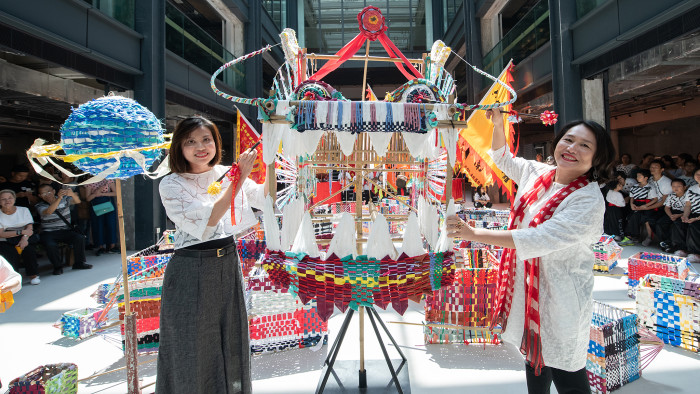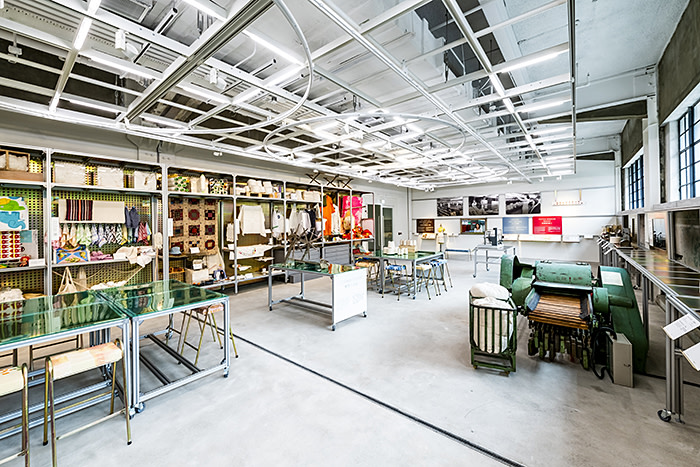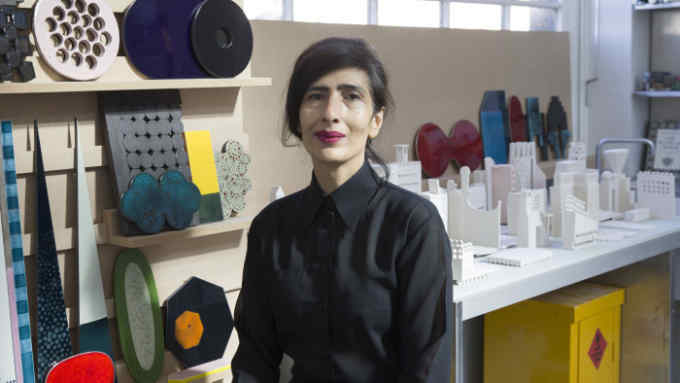Architecture collective Assemble brings together threads of time in Hong Kong

Roula Khalaf, Editor of the FT, selects her favourite stories in this weekly newsletter.
A former cotton-spinning mill has been revamped into a non-profit art centre with a focus on Hong Kong’s textile heritage, thanks to the initiative of the factory founder’s granddaughter, Vanessa Cheung. The Centre for Heritage, Arts & Textile (CHAT), spanning nearly 1,600 sq m, opened last week on the second floor of The Mills in the Tsuen Wan neighbourhood, once one of Hong Kong’s industrial areas.
The venue’s history harks back to 1956, when Nan Fung Textiles Limited, founded by Dr Din-Hwa Chen, began its mill operations. It closed down, the mills having since become warehouses, in 2008. Six years later Cheung, who had trained in landscape architecture and planning, envisioned an ambitious transformation project, leading to renovations costing HK$700m (£67m), funded by the Nan Fung Group, a property developer.
Besides CHAT, The Mills houses Fabrica, a “business incubator” for “tech-style” start-ups in fashion and textile that also provides workspaces, and Shopfloor, a retail space.
Hoping that The Mills can turn the Tsuen Wan district into a “tech-style incubation hub” and spearhead regeneration, Cheung sees CHAT as a way to honour her grandfather. “When I was 13, I chose cotton-spinning as a school project and interviewed my grandpa,” she recalls. “That day, grandpa walked me around the factory floor and taught me that textiles was more than just cotton-spinning but also weaving, dyeing and sewing.”
With a mandate to relate the ignored or forgotten story of Hong Kong’s textile industry, Cheung appointed Chin Chin Teoh and Mizuki Takahashi as CHAT’s directors. “We wanted to combine heritage and cotton’s industrial history as the foundation of all our exhibitions,” says Teoh, aiming “to make art approachable and friendly with conversations and artworks by contemporary artists”.

Inside the glass-fronted art centre are two white and black cube galleries and the DH Chen Foundation Gallery, whose inaugural exhibition, Welcome to the Spinning Factory!, has been designed by the 2015 Turner Prize-winning architecture collective Assemble. Impressed with Assemble’s reconversion of spaces in Britain, CHAT asked them to reactivate the space and hired Hato (Jackson Lam and Kenneth Kan) to conceive the exhibition’s graphic design.
After looking at modern factory systems, Assemble’s Anthony Engi Meacock and Mathew Leung devised a central storytelling framework in extruded aluminium that could evolve with time as more objects are acquired. Surrounding bespoke steel workshop tables are arrangements of 100 archival exhibits, ranging from machinery to yarns and fabrics, that are intended to celebrate the golden age of Hong Kong’s textile industry. “The idea is that the room feels a bit like a library or an archive so it rewards different kinds of experiences,” says Meacock.
To emphasise this, the exhibition also features a demonstration of a spinning machine, sewing workshops run by former factory workers, and videos on a wall in which former workers recount their memories of working in the factory.
A second show in the other two galleries, Unfolding: Fabric of Our Life, brings together works by 17 contemporary artists and collectives from Asia that draw on sociopolitical issues experienced by textile labourers. South Korean artist Jung Yeondoo’s video, “A Girl in Tall Shoes” (2018), is based on the narration of an elderly Chinese woman who migrated from Shanghai to Hong Kong in the 1950s to work in the textile industry and the challenges she faced.
For his project “Under-Construction as Long as You’re Not Paying Attention” (2018-19), Indonesian artist Reza Afisina printed the tags of his T-shirts on to silk satin fabric, adding red words and data relating to human rights and democracy in each country of production. Meanwhile, Thai artist Jakkai Siributr comments on the exploitation of south-east Asian workers in his art work “Fast Fashion” (2015-19), for which he has embroidered traditional garments from Thailand and Cambodia and added patches of fabric used for shirts produced by global fashion brands.
mill6chat.org, themills.com.hk/en
Follow @FTLifeArts on Twitter to find out about our latest stories first. Subscribe to FT Life on YouTube for the latest FT Weekend videos

Comments